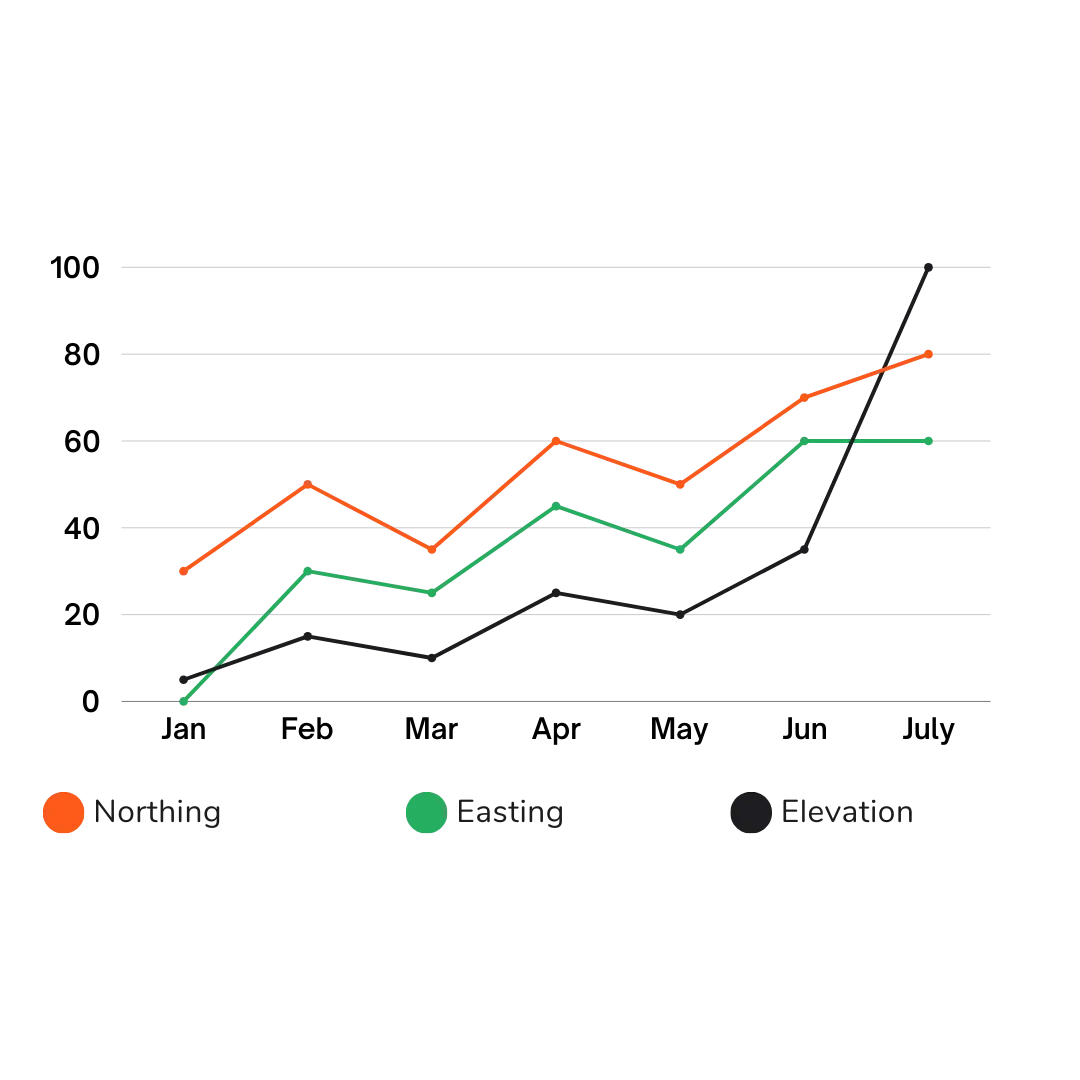SETTLEMENT, DEFORMATION & MOVEMENT SOLUTIONS
From proof-grade Pre-Construction Condition Surveys to AMTS, tilt, settlement, and vibration monitoring, we deliver defensible documentation and real-time data for projects across Vancouver & BC. You get the full photo set, annotated reports, dashboards, and alerts—so decisions are fast and disputes are boring.
Home › Solutions
Real-time construction movement data — precise to the mm, dB & Hz
Construction is fast-paced — but the ground and structures around your site don’t always keep up. Even minor settlement, vibration, or deformation can lead to cracks, costly claims, or regulatory issues. Lil Mount Monitoring provides real-time solutions that detect movement early, track it clearly, and alert you fast enough to act.

Our Solutions
Settlement Monitoring
Track vertical ground and foundation movement with millimeter accuracy. Settlement monitoring protects adjacent buildings, utilities, and infrastructure from construction-related ground loss or soil compression.
Typical applications:
-
- Excavation support systems
- Adjacent property protection
- Utility corridor stability


Deformation Monitoring
Detect horizontal, vertical, and angular changes across structures and ground surfaces. Deformation monitoring ensures compliance with design tolerances and prevents costly surprises.
Typical applications:
-
- Shoring walls and retaining systems
- Bridge decks and abutments
- Tunnels and underground infrastructure
Movement Monitoring
Capture both transient and long-term movement caused by construction activity, excavation, or vibration. Our monitoring systems provide automated alerts when thresholds are exceeded, so you can respond before minor movement becomes structural damage.
Typical applications:
-
- High-rise excavation near transit corridors
- Rail and highway embankments
- Sensitive heritage buildings

How We Deliver These Solutions
Pre-Construction Surveys
Vibration Monitoring
Noise Monitoring
Tilt Monitoring
Crack Monitoring
Dust Monitoring
Inclinometer Monitoring
AMTS Monitoring
Orthomosaic Mapping
Volumetric Analysis
360o Mapping
Progress Monitoring

Industries We Support
Developers & Contractors – Protect surrounding assets during excavation and piling.
Engineers of Record – Access reliable data for structural decision-making.
Transit & Rail – Monitor ground movement near sensitive guideways.
Utilities & Infrastructure – Safeguard pipelines, hydro assets, and municipal works.
Solutions FAQ
What is the difference between settlement, deformation, and movement monitoring?
Settlement monitoring focuses on vertical ground movement, deformation monitoring covers overall changes in shape or position (horizontal, vertical, angular), and movement monitoring captures any shifts caused by vibration or construction activity. Together, these solutions safeguard both ground and structures.
How accurate are your monitoring systems?
Our AMTS and prism setups achieve millimeter-level accuracy, with tiltmeters and vibration monitors capturing sensitive changes instantly. Accuracy is maintained through traceable baselines, regular calibration, and consistent timestamps.
Do I need settlement monitoring for every project?
Not always. Settlement monitoring is most important for deep excavations, projects near transit or utilities, and sites with soft soil. For smaller projects, a pre-construction survey or vibration monitoring may be enough. We tailor solutions to your project’s risk profile.
Will I receive alerts if thresholds are exceeded?
Yes. Our systems are configured to send SMS and email notifications when pre-set thresholds are breached, allowing you to act before issues escalate.
Do monitoring reports meet regulatory requirements?
Absolutely. Our reporting formats are designed to satisfy municipal requirements, engineering reviews, and insurance documentation. We provide monthly reports as well as on-demand data access through dashboards.
How do pre-construction condition surveys fit into monitoring solutions?
Condition surveys document baseline property conditions before work begins. Combined with settlement, deformation, and movement monitoring, they provide clear before-and-after evidence, reducing disputes and protecting all parties.